Light enters the camera following passage through the atmosphere and reflection off of the telescope primary and secondary mirrors. The first camera element, proceeding from right to left, is the dewar's ZnSe window, followed by a field stop and the first of the seven lenses. This first lens is common to all three bands. Two dichroic mirrors then split the optical paths for the J, H, and Ks bands. J-band experiences only a reflection off of the "J-band dichroic." H-band must traverse the J-band dichroic and then experience a reflection off of the "H-band dichroic." Ks band traverses both dichroics. Each band then encounters 6 further lenses and a band-limiting filter. The lens sets are identical in each band. In Figure 1, the straight-through light path leads to the Ks array, the upper path to the J array, and the lower one to H.
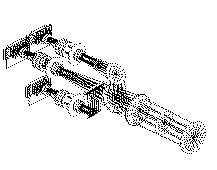
|
| Figure 1 |
Figure 2 shows the telescope mirror reflectivity for a single surface reflection. Starlight encounters two reflections before entering the camera.
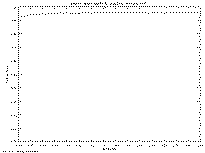
|
| Figure 2 |
Main Telescope Mirror Reflectivity Data Table
Figure 3 shows the transmission of the anti-reflection coated ZnSe dewar window.
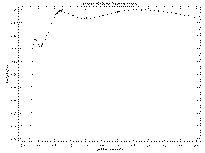
|
| Figure 3 |
Figure 4 shows the transmission of a single anti-reflection coated camera lens. The total transmission for all lenses combined is over 80% (ie, 0.977 approximately), across each of the three camera bands.
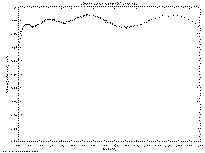
|
| Figure 4 |
Figure 5 shows the J dichroic reflectivity
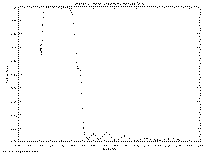
|
| Figure 5 |
Figure 6 shows the J filter transmission
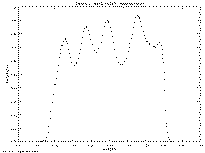
|
| Figure 6 |
Figure 7 shows the transmission of H and Ks light through the J dichroic.
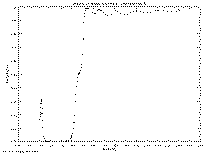
|
| Figure 7 |
Figure 8 shows the H dichroic reflectivity
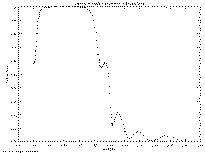
|
| Figure 8 |
Figure 9 shows the H filter transmission
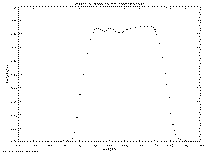
|
| Figure 9 |
Figure 10 shows the H dichroic transmission. This transmission, in combination with the J dichroic transmission is a factor in determining how much light is passed by the Ks band optical train.
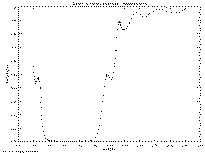
|
| Figure 10 |
Figure 11 shows the Ks filter transmission
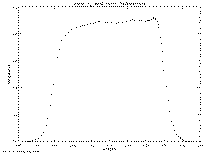
|
| Figure 11 |
Ks Filter Transmission Data Table
NICMOS3 detector array quantum efficiency
Figure 12 shows a representative NICMOS3 array similar to those used in the 2MASS cameras.
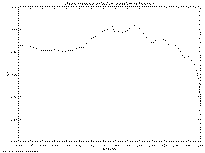
|
| Figure 12 |
NICMOS3 Detector Array Quantum Efficiency Data Table
Total Instrumental Throughput (in the absence of the atmosphere)
Figures 13, 14, and 15 show the product of all the relevant factors above that yield the total instrumental throughput of the camera+telescope system.
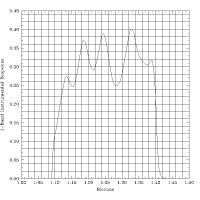
|
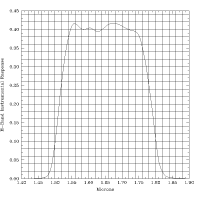
|
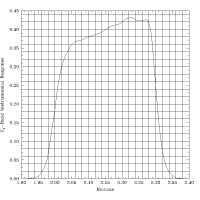
|
| Figure 13 J band |
Figure 14 H band |
Figure 15 Ks band |
| Data table | Data table | Data table |
Figures 16 and 17 show atmospheric transmission data for the north (Mt. Hopkins) and south (CTIO) sites, based on the USAF PLEXUS code (provided by M. Cohen). In addition to atomic and molecular absorption, this code accounts for Rayleigh and site-specific mean aerosol scattering.
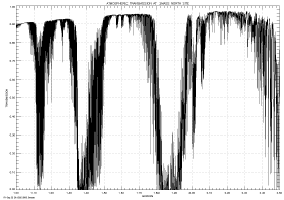
|
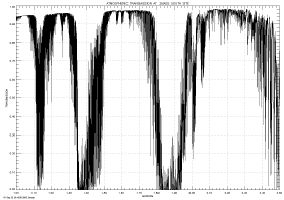
|
| Figure 16 North - Mt. Hopkins | Figure 17 South - CTIO |
| Data table | Data table |
Effect of varying water vapor on J band transmission
The 2MASS J-band is sensitive to the amount of precipitable water in the atmosphere. The following plots illustrate the magnitude of the effect for 0.5 mm and 5.0 mm of water vapor, as computed by the ATRAN code. Figure 18 compares the total system transmission obtained by the two ATRAN models (Figures 19 and 20) and overlays the result using the PLEXUS code for comparison.
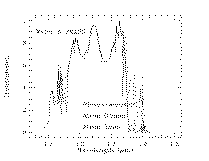
|
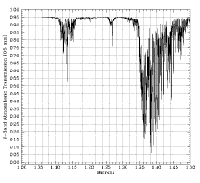
|
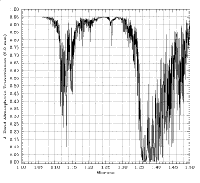
|
| Figure 18 0.5 vs 5.0mm water |
Figure 19 0.5mm ATRAN |
Figure 20 5.0mm ATRAN |
| Data table | Data table |
Figures 21, 22, 23, and 24 show the product of all the relevant factors above, including the atmospheric transmission, that yields the total throughput of the camera+telescope+atmosphere system.
N.B. - These are not "relative spectral response curves" (RSRs) suitable for the derivation of synthetic photometry. RSR curves from Cohen et al. 2003 (AJ, in press) are tabulated in Section VI.4.a.
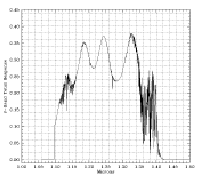 |
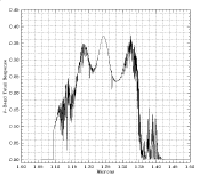 |
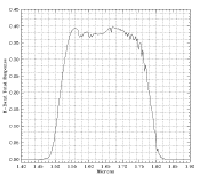 |
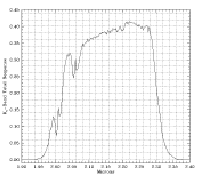 |
| Figure 21 J band (0.5mm water) |
Figure 22 J band (5.0mm water) |
Figure 23 H band |
Figure 24 Ks band |
| Data table | Data table | Data table | Data table |